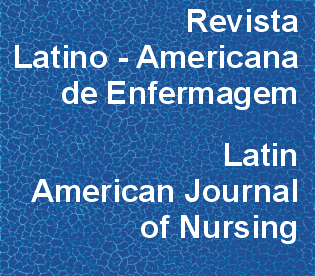Pre-frailty and frailty of elderly residents in a municipality with a low Human Development Index
DOI:
https://doi.org/10.1590/0104-1169.3538.2464Abstract
OBJECTIVE: to identify the prevalence of the factors associated with pre-frailty and frailty of elderly residents in a municipality with a low Human Development Index METHOD: Cross-sectional study with a populational and household framework conducted with 316 elderly people. Frailty was determined from the presence of three or more of the following factors: (i) self-reported unintentional weight loss; (ii) lack of strength and energy; (iii) weakness; (iv) slowness; (v) low level of physical activity. The association between frailty and socio-demographic, behavioral and health factors was measured using the multinomial logistic regression technique. RESULTS: The prevalence of pre-frailty and frailty was 58.7% and 23.8%, respectively. The adjusted regression model showed that the state of pre-frailty was associated with gender, age group and BMI, and frailty was associated with gender, age group, hospitalization, functional capacity, and self-perceived health. CONCLUSION: The evidence presented in this study demonstrates more variables associated with the frailty condition, reinforcing the concept of a multifactorial clinical syndrome that may result in the loss of functionality.Downloads
Download data is not yet available.
Downloads
Published
2014-07-01
Issue
Section
Original Articles
License
RLAE’s authorship concept is based on the substantial contribution by each of the individuals listed as authors, mainly in terms of conceiving and planning the research project, collecting or analyzing and interpreting data, writing and critical review. Indication of authors’ names under the article title is limited to six. If more, authors are listed on the online submission form under Acknowledgements. The possibility of including more than six authors will only be examined on multicenter studies, considering the explanations presented by the authors.Including names of authors whose contribution does not fit into the above criteria cannot be justified. Those names can be included in the Acknowledgements section.
Authors are fully responsible for the concepts disseminated in their manuscripts, which do not necessarily reflect the editors’ and editorial board’s opinion.
How to Cite
Pre-frailty and frailty of elderly residents in a municipality with a low Human Development Index . (2014). Revista Latino-Americana De Enfermagem, 22(4), 654-661. https://doi.org/10.1590/0104-1169.3538.2464



